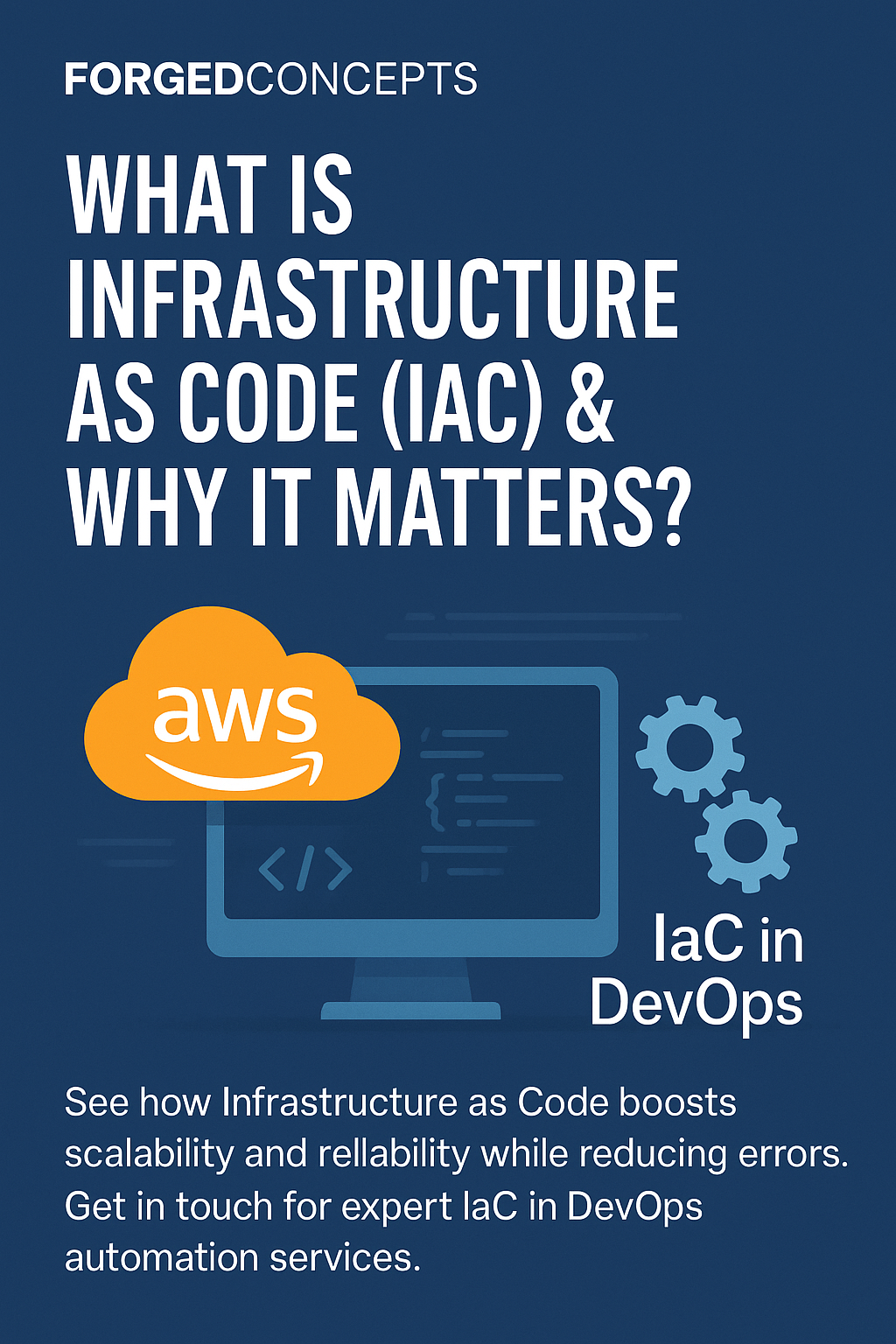
What is Infrastructure as Code (IaC) & Why Does It Matter?
In today’s technology landscape, managing infrastructure manually is no longer practical, especially when speed, consistency, scalability, and security are critical. That’s where Infrastructure as Code (IaC) AWS comes in.
IaC revolutionizes the way teams build and manage IT environments by replacing manual configurations with code-based automation. Instead of a manual setup, developers use scripts to define and deploy infrastructure quickly and consistently. IaC supports faster, more reliable software delivery and strengthens DevOps efficiency.
Let’s explore what IaC is, how it works, and why it’s essential for modern development.
Overview of Infrastructure as Code (IaC)
Infrastructure as Code (IaC) is a modern approach for setting up and managing computing infrastructure using code rather than manually configuring servers and systems. Every app requires a solid foundation, which includes essential components such as operating systems, databases, and storage. Traditionally, developers had to manually install, update, and maintain these components throughout the app’s lifecycle.
Manual setup is time-consuming and prone to errors, especially when dealing with large-scale systems. With IaC, you define the desired state of your infrastructure in code, and DevOps automation tools handle the rest, getting you there without having to manually do every step and make sure you do it exactly the same way every time.
With IaC, you can save time and reduce human errors. Developers can focus more on writing great apps rather than managing environments. Companies turn to Infrastructure as Code AWS to cut costs, minimize risks, quickly adapt to new business needs, and help keep it secure along the way.
The Role of IaC in DevOps
DevOps brings together development and operations teams. IaC in DevOps utilizes automation and collaboration to streamline software delivery and system management. Here are a few ways IaC can help your team:
- Automates infrastructure provisioning, allowing DevOps teams to spin up environments on demand, speeding up development and testing cycles.
- Ensures environment consistency across development, staging, and production, reducing the chances of "it works on my machine" issues.
- Enables version control of infrastructure, making changes trackable, reviewable, and reversible, just like application code.
- Supports continuous integration and deployment (CI/CD) by embedding infrastructure changes directly into pipelines for seamless automation.
- Reduces manual configuration errors, increasing system reliability and reducing the time spent debugging environment mismatches.
- Improves collaboration by giving developers and operations teams a shared, codified approach to managing infrastructure.
- Accelerates feedback loops by allowing rapid environment setup and teardown, enabling quicker testing and iteration.
- Facilitates scalable cloud infrastructure, adapting automatically to usage patterns through code-driven policies and templates.
- Supports disaster recovery and rollback, enabling teams to quickly rebuild infrastructure or revert changes with confidence.
- Enhances compliance and auditing, since infrastructure state and changes are defined, logged, and reproducible through code.
5 Main Features of Infrastructure as Code
IaC is key to modern infrastructure management because of its top features, explained below:
1) Automation
With IaC, tasks such as provisioning, updating, and configuring can be done via automatic scripts.
2) Version Control
Since code-based changes go into version-control systems like Git, it’s easy to examine and undo any unnecessary changes.
3) Scalability
With a few clicks, recreate infrastructure environments in any desired region or cloud.
4) Consistency
IaC helps replicate environments in the same way, making it easy to test in one environment and promote to other environments, which reduces bugs caused by configuration drift.
5) Auditability
Any modification to an infrastructure can be found, recorded, and examined like your regular code changes.
What are the Applications of IaC?
IaC isn’t limited to just one use case. It applies across a wide variety of tech scenarios.
Cloud Resource Provisioning
Automate the deployment of servers, storage, and networking platforms in the cloud.
Multi-Environment Management
Maintain consistent dev, test, staging, and production environments effortlessly.
Disaster Recovery
Rapidly recreate infrastructure in new locations using saved configurations in case of system failure.
Security Compliance
Apply security policies across environments through policy-as-code tools.
CI/CD Pipeline Integration
Seamlessly incorporate infrastructure updates into your CI/CD workflows for smooth deployments.
How Does Infrastructure as Code Work?
The IaC workflow is structured and reliable. Here’s how it operates step by step:
Define Infrastructure in Code
Use a declarative or imperative language (like Terraform, CloudFormation, or Ansible) to describe what your environment should look like.
Store in Version Control
Keep your code in repositories such as GitHub or GitLab for collaboration and change tracking.
Plan Changes
Tools like Terraform offer “plan” features that show what will change before executing updates, so you can review your changes before applying them.
Apply Changes Automatically
IaC tools can apply code to provision or modify infrastructure based on what is defined by your team.
Monitor and Maintain
Utilize integrated tools to track performance, address drift, and maintain consistency over time.
Rollback Easily
Quickly revert to a previous version of your infrastructure setup in case something goes wrong.
Conclusion
In short, Infrastructure as Code (IaC) is transforming software development today. It ensures that every phase of your infrastructure lifecycle is faster, more consistent, and dependable.
Using IaC, your teams no longer need to spend time on tedious tasks; they can concentrate on creating new ideas. Infrastructure as Code in AWS with DevOps will support the creation of systems that are scalable, secure, and agile.
If you need professional DevOps services, get in touch with Forged Concepts and let our experts help you build a future-ready infrastructure that drives innovation and growth.
Forged Concepts
Explore expert cloud, AWS, and DevOps insights by forged Concepts, a trusted AWS MSP
View All Posts →